Year 6
The science inquiry skills and science as a human endeavour strands are described across a two-year band. In their planning, schools and teachers refer to the expectations outlined in the achievement standard and also to the content of the science understanding strand for the relevant year level to ensure that these two strands are addressed over the two-year period. The three strands of the curriculum are interrelated and their content is taught in an integrated way. The order and detail in which the content descriptions are organised into teaching and learning programs are decisions to be made by the teacher.
Incorporating the key ideas of science
Over Years 3 to 6, students develop their understanding of a range of systems operating at different time and geographic scales.
In Year 6, students explore how changes can be classified in different ways. They learn about transfer and transformations of electricity, and continue to develop an understanding of energy flows through systems. They link their experiences of electric circuits as a system at one scale to generation of electricity from a variety of sources at another scale and begin to see links between these systems. They develop a view of Earth as a dynamic system, in which changes in one aspect of the system impact on other aspects; similarly, they see that the growth and survival of living things are dependent on matter and energy flows within a larger system. Students begin to see the role of variables in measuring changes and the value of accuracy in these measurements. They learn how to look for patterns and to use these to identify and explain relationships by drawing on evidence.
(source: www.australiancurriculum.edu.au)
Achievement Standard
By the end of Year 6, students compare and classify different types of observable changes to materials. They analyse requirements for the transfer of electricity and describe how energy can be transformed from one form to another when generating electricity. They explain how natural events cause rapid change to Earth’s surface. They describe and predict the effect of environmental changes on individual living things. Students explain how scientific knowledge helps us to solve problems and inform decisions and identify historical and cultural contributions.
Students follow procedures to develop investigable questions and design investigations into simple cause-and-effect relationships. They identify variables to be changed and measured and describe potential safety risks when planning methods. They collect, organise and interpret their data, identifying where improvements to their methods or research could improve the data. They describe and analyse relationships in data using appropriate representations and construct multimodal texts to communicate ideas, methods and findings.
(source: www.australiancurriculum.edu.au)
- Plus Plan
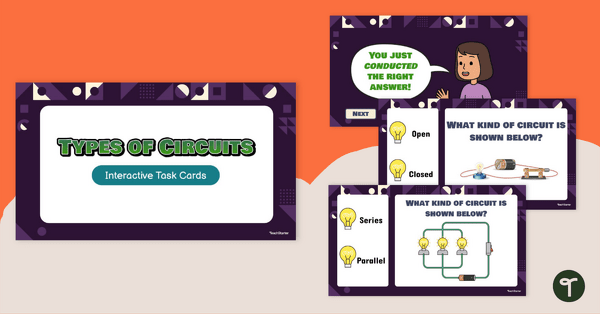
Types of Circuits Interactive Task Cards
Test your students’ knowledge of different types of circuits with this set of 24 interactive task cards.
- Plus Plan
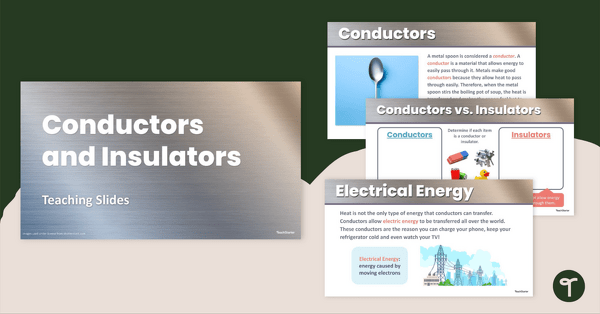
Conductors and Insulators Teaching Slides
Teach your students about insulators and conductors of thermal and electrical energy with this set of teaching slides.
- Plus Plan
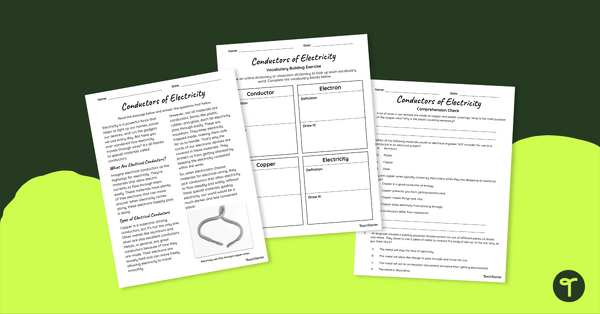
Conductors of Electricity Reading Comprehension Worksheet
Challenge your students to show what they know about electrical conductors with this reading comprehension worksheet.
- Plus Plan
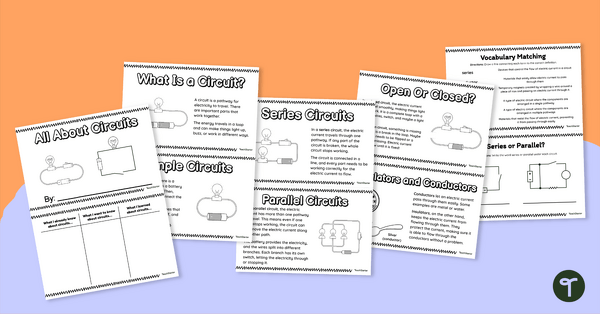
All About Circuits Mini-Book
Use this mini-book to teach your students about the different types of circuits, symbols, their components and much more.
- Plus Plan
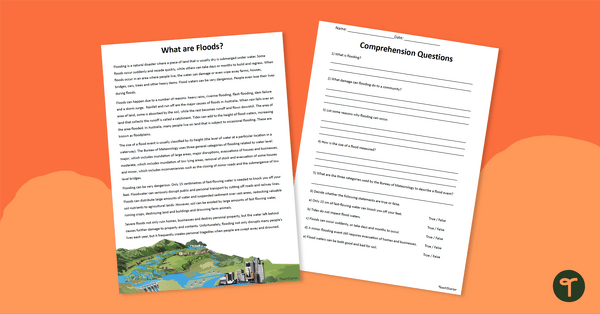
What Are Floods? Comprehension Worksheet
Read and learn about flooding with a printable reading comprehension worksheet.
- Plus Plan
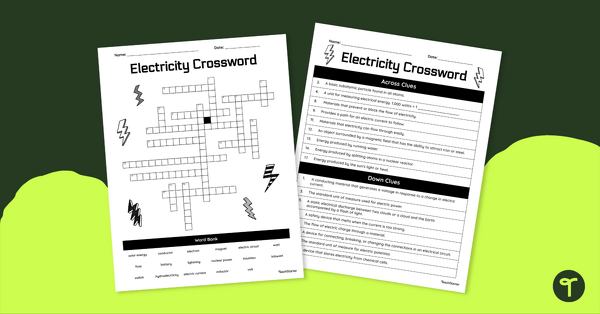
Electricity Crossword
Review vocabulary for electricity concepts with a science crossword puzzle.
- Plus Plan
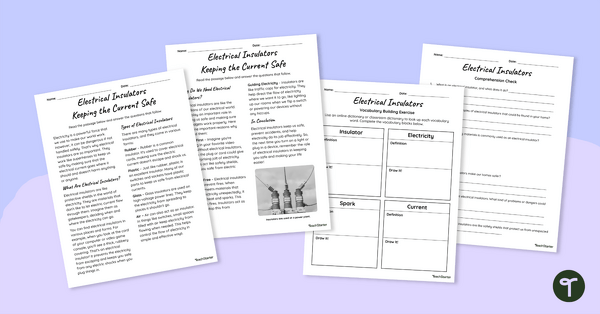
Electrical Insulators Reading Comprehension Worksheet
Discover the shockingly interesting world of electrical insulators with our downloadable reading comprehension worksheet.
- Plus Plan

How Electricity Gets to Our Homes Poster
Display this year 6 science poster in your classroom that shows how electricity reaches and powers homes.
- Plus Plan
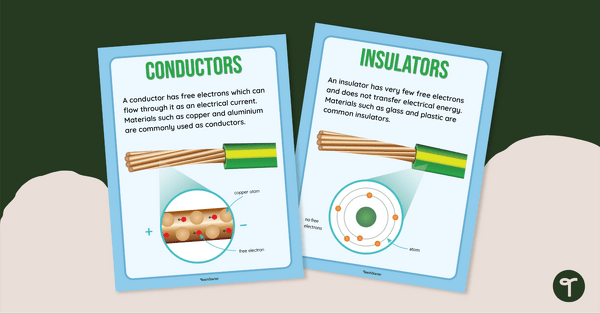
Insulators and Conductors Poster Set
Teach your students about the characteristics of insulators and conductors with this set of science posters for the classroom.
- Plus Plan
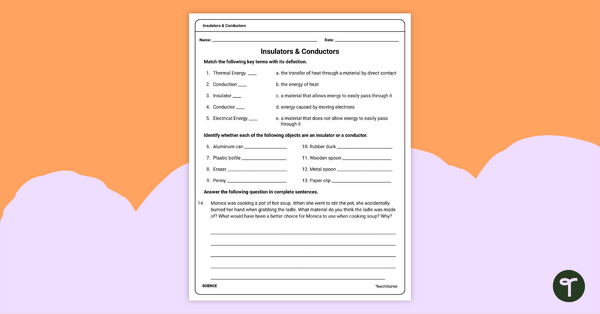
Conductors and Insulators Worksheet
Use this insulators and conductors worksheet with your students to practise identifying the characteristics of thermal and electrical energy.
- Plus Plan
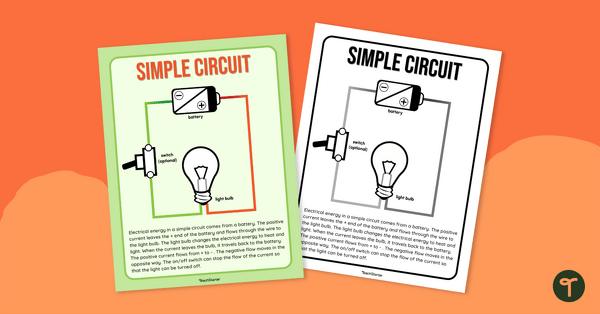
Simple Circuit Diagram
Spark curiosity and illuminate young minds with the wonders of electricity. Download this simple circuit diagram to light up your classroom!
- Plus Plan

Energy and Electricity Vocabulary Cards
Reinforce science vocabulary in your classroom with this set of word wall cards that focus on forms of energy and electricity.
- Plus Plan

Understanding Insulators Teaching Slides for Year 6
Teach your students about electrical and thermal insulators with this teaching presentation.
- Plus Plan
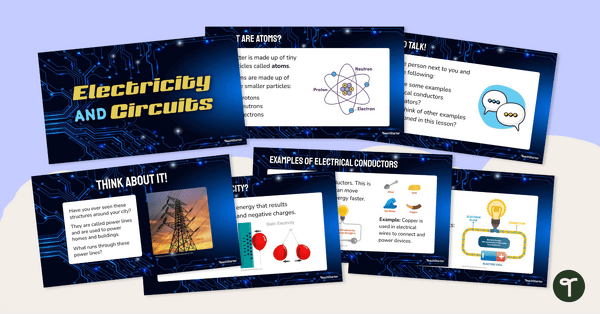
Electricity and Circuits Teaching Slides for Year 6
Use our editable teaching slides to break down the fundamentals of electricity and circuits for your students.
- Plus Plan
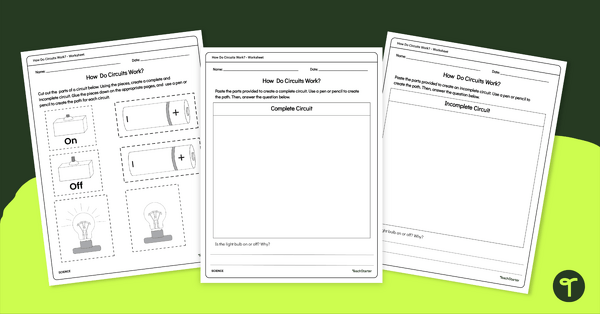
How Do Circuits Work? Worksheet for Year 6
Guide your students to create a diagram that shows complete and incomplete circuits and explain their function with this worksheet.
- Plus Plan
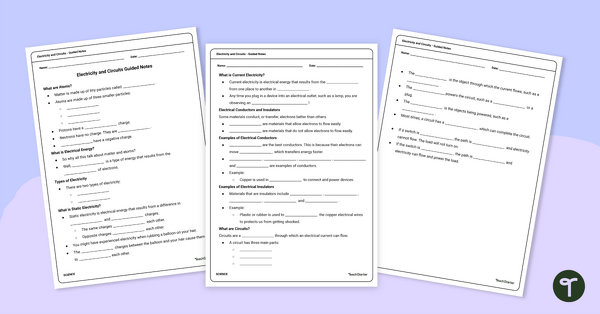
Electricity and Circuits Guided Notes for Year 6
Use this set of guided notes when teaching your students about electricity and circuits.
- Plus Plan
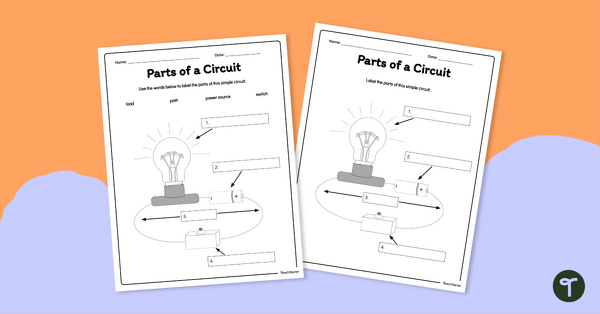
Parts of a Circuit Worksheet
Guide your students to identify and label the 4 parts of a circuit with this electrical circuit worksheet.
- Plus Plan
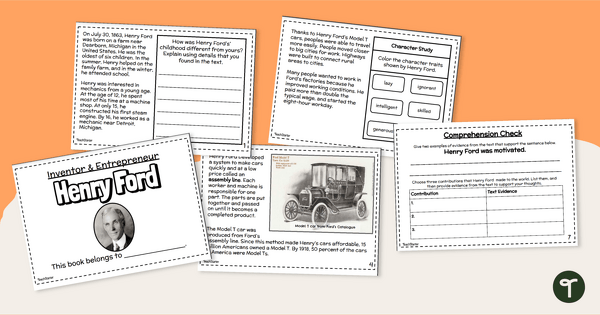
Henry Ford Mini Book - Famous Inventor Activity Book
Provide students with cross-curricular history, science and reading instruction with a printable Henry Ford mini book.
- Plus Plan
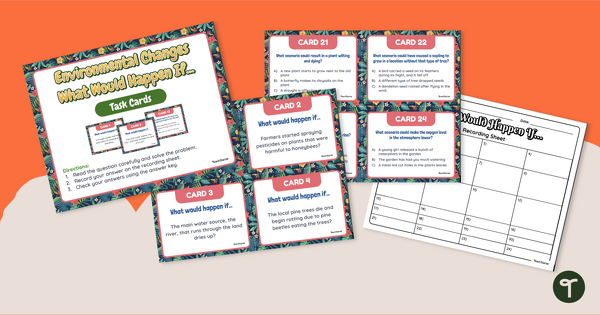
What Would Happen If...? Environmental Impact Task Cards
Predict and identify the effects of environmental change on plants and animals with a set of printable science task cards.
- Plus Plan
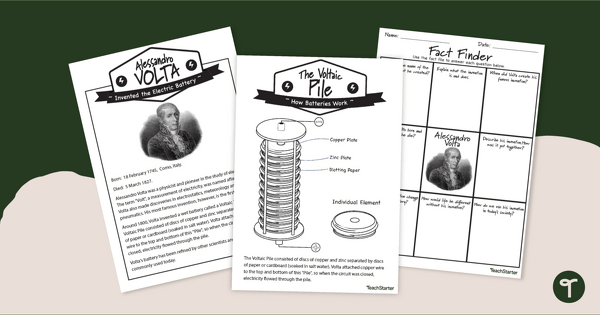
Famous Inventors Fact File — Alessandro Volta Comprehension Worksheet
Print an Alessandro Volta fact file worksheet to introduce students to this famous inventor and expand their understanding of electricity!
- Plus Plan
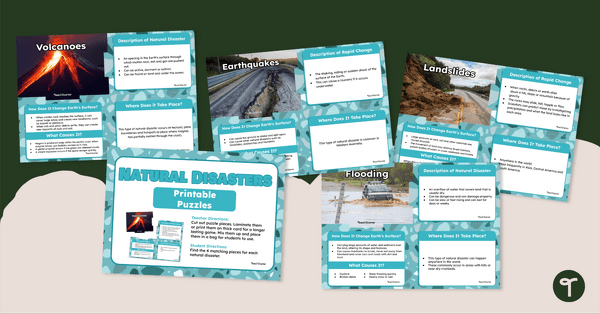
Natural Disasters – Printable Puzzles
Match pictures and facts of various natural disasters with this set of printable science puzzles.
- Plus Plan

Lab Safety Teaching Slides
Teach the important of science safety before conducting experiments with this 18-slide Lab Safety PowerPoint.
- Plus Plan
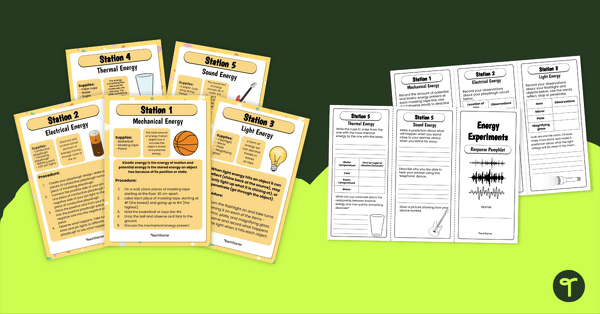
Forms of Energy – Year 4 Science Experiments for Kids
Investigate mechanical, electrical, light, thermal and sound energy with this set of science activities for kids.
- Free Plan
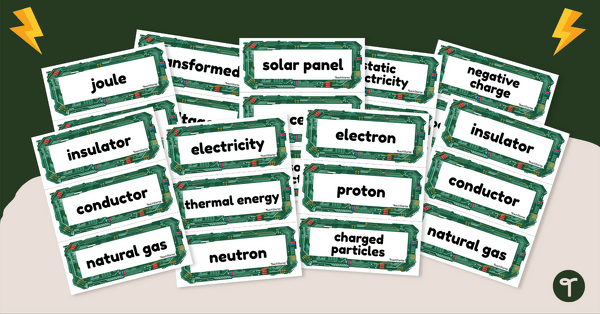
Electricity Word Wall Vocabulary
Use this teacher-created electricity resource to teach electricity-related vocabulary. Build a word wall with your students during your electricity lessons.
- Free Plan
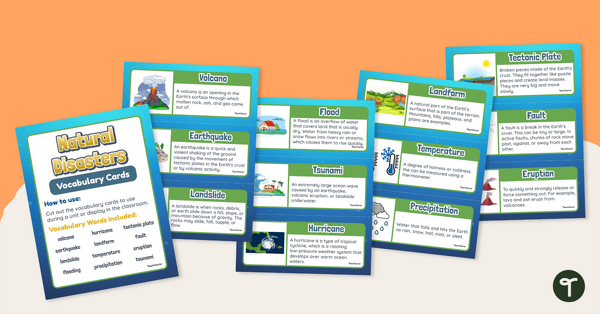
Natural Disasters - Illustrated Vocabulary Display
Reinforce science vocabulary in your classroom with this set of illustrated and annotated natural disaster word wall cards.
- Plus Plan
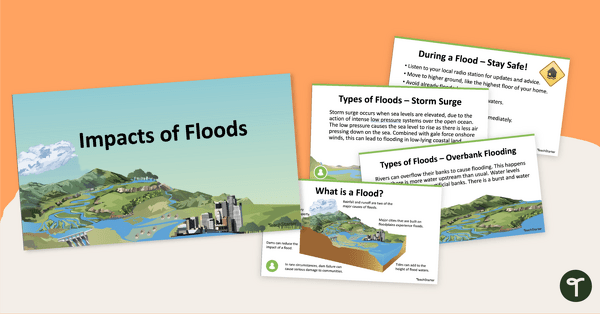
Impacts of Floods PowerPoint
A 17-slide editable PowerPoint template about floods and their impact on communities.
- Plus Plan
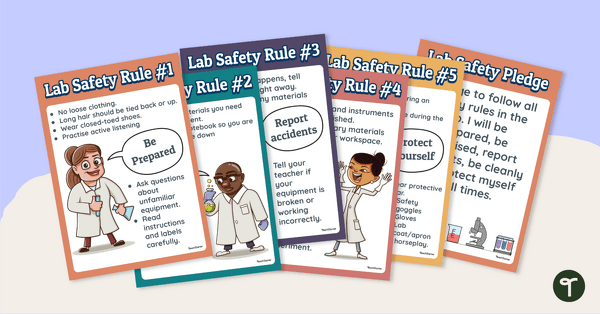
Science Lab Safety Rules – Printable Poster Pack
Remind your students of lab safety rules with a printable classroom poster set.
- Plus Plan
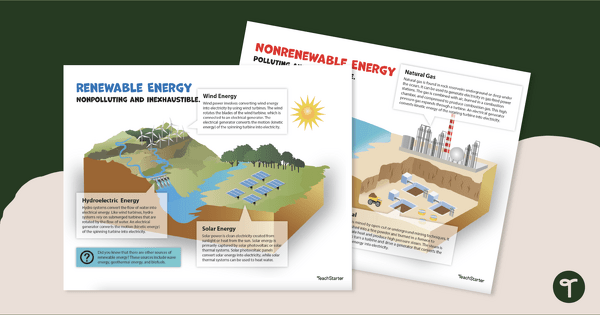
Renewable and Non-renewable Energy Sources Poster Pack
Display and examine renewable and non-renewable energy sources, including wind, hydro, solar, natural gas, oil and coal.
- Plus Plan
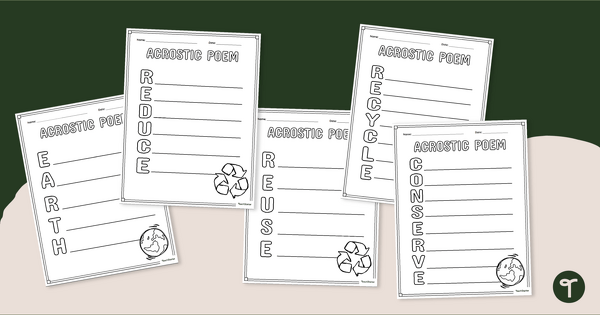
Earth Day - Acrostic Poem Template Pack
An acrostic poem template to use in the classroom to celebrate Earth Day and National Poetry Month.
- Free Plan
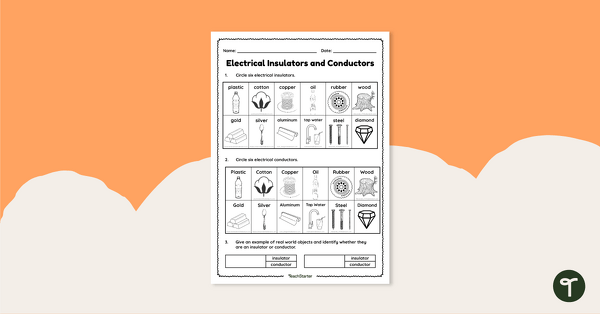
Insulators and Conductors Worksheet
Identify different insulators and conductors of electrical energy with this worksheet.
- Plus Plan
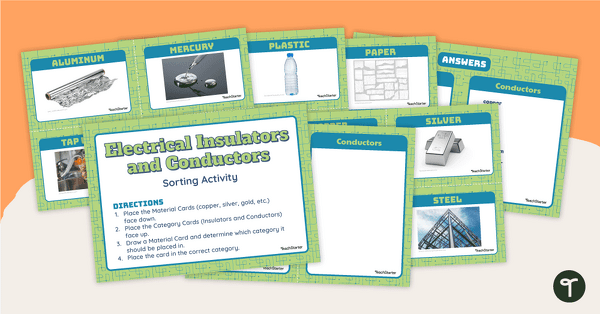
Insulators and Conductors Sorting Activity
Distinguish between electrical insulators and conductors with a picture-based sorting activity.
- Free Plan
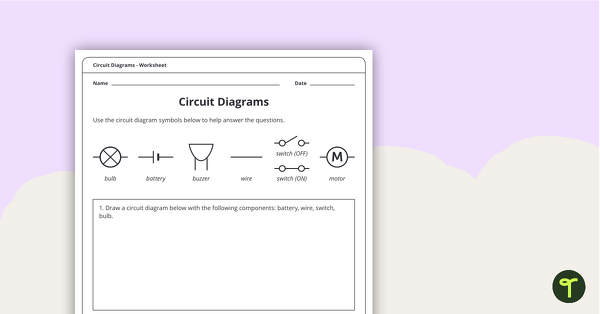
Circuit Diagrams Worksheet
A worksheet that explores how to read and write circuit diagrams.